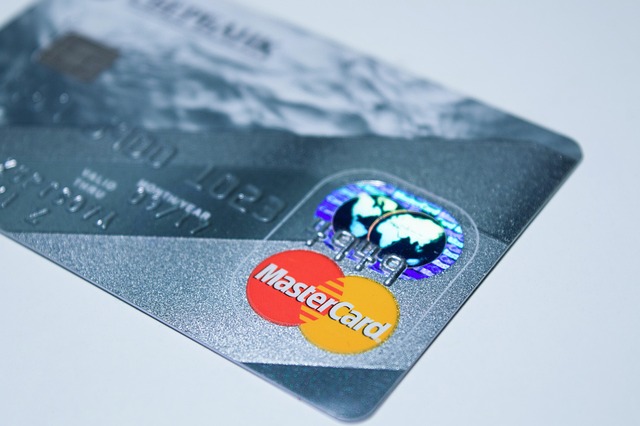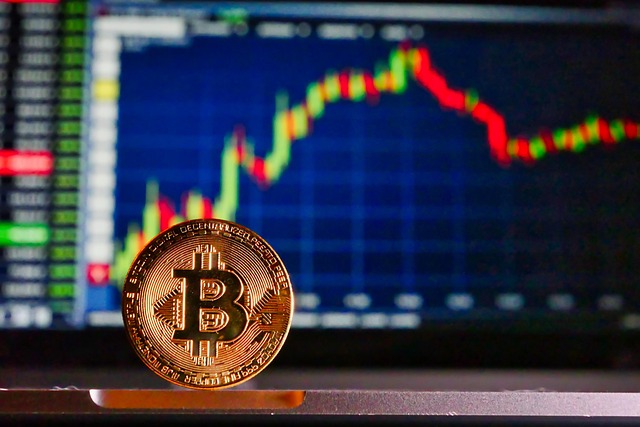Bitcoin price at risk of new 5-month low near $71K if tariff war and stock market tumult continues
Bitcoin (BTC) price made a swift move to $78,300 at the April 9 Wall Street open as “herd-like” price action in equities markets continued to spook risk-asset traders.BTC/USD 1-hour chart. Source: Cointelegraph/TradingViewBitcoin gyrates as stocks make historyData from Cointelegraph Markets Pro and TradingView showed BTC/USD retargeting five-month lows under $75,000 before rebounding leading into the NY trading session.A deepening US-China trade war kept stocks on their toes, having cost Bitcoin the $80,000 mark the day prior.Highly unusual market behavior had accompanied US tariff announcements, and China’s response with reciprocal tariffs saw the S&P 500 smash records with its roundtrip from lows to highs and back.“On a point basis, the S&P 500 just posted its largest intraday reversal in history, even larger than 2020, 2008 and 2001,” trading resource The Kobeissi Letter confirmed in ongoing market coverage on X. “You have just witnessed history.”S&P 500 chart. Source: The Kobeissi Letter/XKobeissi drew attention to volatility kicking in from the smallest of triggers, with markets particularly sensitive to statements from US President Donald Trump.“The problem with markets right now: Both bulls AND bears feel ‘uncomfortable’ in these market conditions,” it explained on the day.“Why? Because stocks can swing $5+ trillion in market cap on the basis of a single post from a single person: President Trump. This is why we are seeing ‘herd-like’ price action, where large daily gains turn into large daily losses, and vice-versa.”Crypto Fear & Greed Index (screenshot). Source: Alternative.meCrypto was no exception to the tug-of-war, with the Crypto Fear & Greed Index dropping to its lowest levels since early March.For Keith Alan, co-founder of trading resource Material Indicators, the status quo was unlikely to improve in the short term.“Part of me wants to sit on my hands and wait for this shit storm to pass,” he told X followers while examining order book conditions for Ether (ETH) and Solana (SOL).“Because I don’t think it is going to pass quickly, I’m not too eager to buy, even though some of these assets are on sale at great prices. That said, the fact that bids are piling in on some assets makes them very enticing.”Related: Black Monday 2.0? 5 things to know in Bitcoin this weekCME “gap” creates BTC price resistance above $82,000Focusing on BTC price action, popular trader and analyst Rekt Capital revealed a new nearby resistance level in the form of a recent “gap” in CME Group’s Bitcoin futures.“On the CME Futures Bitcoin chart, price broke down from its sideways range (black-black),” he wrote alongside a chart showing the gap between $82,000 and $85,000.“In confirming the breakdown from the range via a bearish retest, Bitcoin filled the CME Gap (red circle) in the process. That CME Gap is now a resistance.”CME Bitcoin futures 1-week chart with gap highlighted. Source: Rekt Capital/XFurther analysis gave a new BTC price range with $71,000 as its lower boundary based on previous trading volumes.“Bitcoin is experiencing downside continuation after upside wicking into the early March Weekly lows (red),” Rekt Capital summarized.“Having confirmed this red level as new resistance, BTC is now dropping into the $71,000-$83,000 Volume Gap to fill this market inefficiency.”BTC/USD 1-week chart with volume data. Source: Rekt Capital/XAs Cointelegraph reported, Rekt Capital is among those seeing a potential long-term reversal point at $70,000 or marginally lower.This article does not contain investment advice or recommendations. Every investment and trading move involves risk, and readers should conduct their own research when making a decision.
DeFi security and compliance must be improved to attract institutions
Opinion by: Sergej Kunz, co-founder of 1inchInstitutional players have been closely watching decentralized finance’s growth. Creating secure and compliant DeFi platforms is the only solution to build trust and attract more institutions.Clear waters attract big shipsOver the past four years, institutional DeFi adoption has gone from 10% of hedge funds to 47%, and is projected to rise to 65% in 2025. Goldman Sachs is reaching their arms to DeFi for bond issuance and yield farming. Early adopters are already positioning themselves in onchain finance, including Visa, which has processed over $1 billion in crypto transactions since 2021 and is now testing cross-border payments. In the next two years, institutional adoption will speed up. A compliant regulatory framework that maintains DeFi’s core benefits is necessary for institutional adoption to engage confidently. DeFi’s institutional trilemmaIt is no secret that many DeFi security exploits happen every year. The recent Bybit hack reported a $1.4 billion loss. The breach occurred through a transfer process that was vulnerable to attack. Attacks like these raise concerns about multisignature wallets and blind signing. This happens when users approve transactions without full details, rendering blind signing a significant risk. This case calls for stronger security measures and improvements in user experience.The threats of theft due to vulnerabilities in smart contracts or mistakes by validators make institutional investors hesitate when depositing large amounts of money into institutional staking pools. Institutions are also at risk of noncompliance due to a lack of clear regulatory frameworks, creating hesitation to enter the space. The user interface in DeFi is often designed for users with technical expertise. Institutional investors require user-friendly experiences that make DeFi staking possible without relying on third-party intermediaries.Build it right, and they will comeInstitutional interest in bringing traditional assets onchain is enormous, with the tokenized asset market estimated to reach $16 trillion by 2030. To confidently participate in DeFi, institutions need verifiable counterparties that are compliant with regulatory requirements. The entry of traditional institutional players into DeFi has led some privacy advocates to point out that it can counter the essence of decentralization, which forms the bedrock of the ecosystem.Recent: Securitize to bring BUIDL tokenized fund to DeFi with RedStone price feedsInstitutions must be able to trust DeFi platforms to maintain compliance standards while providing a safe and seamless user interface. A balanced approach is key. DeFi’s permissionless nature can be achieved while maintaining compliance through identity profiles, allowing secure transactions. Similarly, transaction screening tools facilitate real-time monitoring and risk assessment. Blockchain analytics tools help institutions to maintain compliance with Anti-Money Laundering regulations and prevent interaction with blacklisted wallets. Integrating these tools can help detect and prevent illicit activity, making DeFi safer for institutional engagement.Intent-based architecture can improve securityThe relationship between intent-based architecture and security is evident; the very design is built to reduce risks, creating a more reliable user experience. This protects the user against MEV exploits, a common issue of automated bots scanning for large profitable trades that can be exploited. Intent-based architecture also helps implement compliance frameworks. For instance, restricting order submissions to clean wallets and allowing resolvers to settle only the acceptable orders.It’s well understood that in traditional DeFi transactions, users rely often on intermediaries like liquidity providers to execute trades or manage funds. This leads to counterparty risk, unauthorized execution and settlement failure. The intent-based architecture supports a trustless settlement that ensures users commit only when all conditions are met, reducing risk and removing blind trust from the picture.DeFi platforms must simplify interactions and UX for institutional investors. This system bridges the gap between. Through executing offchain while ensuring security, the intent-based architecture makes DeFi safer and more efficient. However, one of the challenges to this includes integrating offchain order matching while maintaining onchain transparency.Late adopters of DeFi will struggle to keep upFor the early adopters of DeFi, there is a competitive advantage in liquidity access and yield advantages, whereas late adopters will face more regulatory scrutiny and entry barriers. By 2026, the institutional players that have failed to adopt DeFi may struggle to keep up. This is seen in the examples of early adopters like JPMorgan and Citi’s early tokenization projects. TradFi leaders like them are already gearing up for onchain finance.The way forwardRegulatory bodies, supervisory agencies and policy leaders must provide clear, standardized guidelines to facilitate broader institutional participation. Uniform protocols underpinning wider institutional involvement are underway. DeFi platforms must be prepared beforehand to provide all the necessary pillars of compliance and security to institutional players who want to embrace mainstream adoption. Executing this shall require combined efforts from regulators, developers and institutions.Opinion by: Sergej Kunz, co-founder of 1inch. This article is for general information purposes and is not intended to be and should not be taken as legal or investment advice. The views, thoughts, and opinions expressed here are the author’s alone and do not necessarily reflect or represent the views and opinions of Cointelegraph.
Bitcoin DeFi booms as Core blockchain hits $260M in dual-staked assets
Core, a proof-of-stake blockchain built on Bitcoin, has surpassed $260 million in dual-staked assets as institutional interest in Bitcoin-based decentralized finance (DeFi) continues to grow.Core’s initial contributor, Rich Rines, told Cointelegraph that as of April 7, over 44 million Core tokens have been dual-staked with 3,140 Bitcoin (BTC). At the time of writing, the assets are worth about $260 million. Core’s dual-staking model lets Bitcoin holders earn higher yields with CORE tokens. While users can stake BTC at a lower rate, those who stake BTC with Core tokens get an enhanced yield. “Dual Staking can multiply base staking rewards over 15 times, depending on how many CORE tokens are staked,” Core said in a statement. Core’s new milestone highlights growing demand for Bitcoin stakingThe latest milestone was driven in part by institutional investors integrating Core’s staking model into their platforms.Core Foundation said that major custodians like BitGo, Copper and Hex Trust have enabled their clients to gain access to the protocol by integrating dual staking. Core added that it had partnered with Maple Finance for a structured asset that uses Core’s dual-staking to generate yield. Rines told Cointelegraph that institutions have been crucial catalysts to the early success of its dual staking model. He said the model unlocks new opportunities for institutions. “This shift has broader implications for the Bitcoin ecosystem. Historically, institutional BTC holdings required paying custody fees without generating yield,” Rines told Cointelegraph.He added that by integrating Core’s staking model, institutions can turn Bitcoin into a yield-bearing asset that offsets costs and unlocks new capital efficiencies.At the time of writing, Core holds the biggest total value locked (TVL) among Bitcoin sidechains. Footprint analytics puts Core’s TVL above $400 million, with a market share of 28%. Distribution of chain TVLs among Bitcoin sidechains. Source: Footprint AnalyticsRelated: Bitcoin ETFs lose $326M amid ‘evolving’ dynamic with TradFi marketsBitcoin becoming “productive” The Core team said the increase in the number of dual-staked CORE tokens highlights how the product fulfills its design. Rines told Cointelegraph: “The 44 million+ CORE tokens dual-staked to date show real adoption of the model. It reflects that users, both retail and institutional, are actively looking to put their Bitcoin to work securely and sustainably.”Rines emphasized that Core’s dual-staking system offers a sustainable utility for long-term Bitcoin holders without requiring them to relinquish custody.“This is Bitcoin becoming productive, not by trusting third parties, but by participating in a system designed to reward real alignment and long-term engagement,” Rines said.Magazine: New ‘MemeStrategy’ Bitcoin firm by 9GAG, jailed CEO’s $3.5M bonus: Asia Express
New York bill proposes blockchain study for election record security
Blockchain may soon earn itself a role in New York State’s voting processes and procedures.New York Assemblymember Clyde Vanel introduced Bill A07716 on April 8, directing the state Board of Elections to evaluate how blockchain could help protect voter records and election results. The legislation is currently under consideration by the Assembly Election Law Committee.According to the bill’s summary, the goal is to “study and evaluate the use of blockchain technology to protect voter records and election results.“The bill mandates that the Board of Elections produce a report within one year assessing the potential benefits of blockchain in securing election data. The study must include input from experts in blockchain, cybersecurity, voter fraud and election recordkeeping.Bill text. Source: New York State AssemblyRelated: Ripple announces money transmitter licenses in Texas and New YorkBlockchain applications in electionsThis is not the first initiative that attempts to bring the tamper-proof features of blockchain technology to the voting process. In early March, the Bitcoin network was used to secure and store the results of the Williamson County, Tennessee Republican Party Convention’s March 4 election to determine the leadership and board of the local party chapter.About a year ago, Brian Rose — an independent mayoral candidate in London — told Cointelegraph that blockchain-based voting systems could foster more transparency and public trust in the election process:“Wouldn’t we all sleep better at night if the voting system was on the blockchain and you could really prove that identity and you could actually prove that vote and there would be an immutable record? This is the future and I think it takes someone like me who comes from a business background who’s intimately involved in the blockchain.”Still, experts caution that blockchain systems are only as reliable as the data input into them — a concept often summarized as “garbage in, garbage out.” While blockchain offers tamper-resistant storage, it does not guarantee the integrity of the original data submission.Related: Election tally: Does blockchain beat the ballot box?A crypto-conscious assemblymemberVanel is no stranger to blockchain-related initiatives, having introduced a bill that would establish criminal penalties to prevent cryptocurrency fraud and protect investors from rug pulls in early March. In January, he also stated that New York became the first US state to create a cryptocurrency task force to study the regulation, use and definition of digital currency.He has also been a vocal commenter on the industry and its relationship with policymakers for years. In May 2019, Vanel said that the blockchain industry needs to be better at lobbying for itself and educating regulators.Magazine: 3 reasons Ethereum could turn a corner: Kain Warwick, X Hall of Flame
Bitcoin’s safe-haven appeal grows during trade war uncertainty
The global trade war may be a silver lining for Bitcoin’s growing recognition as a safe-haven asset next to gold, thanks to its liquidity and accessibility advantages compared to precious metals.Financial markets have been rattled since US President Donald Trump’s April 2 reciprocal import tariffs announcement, leading to record-breaking sell-offs for traditional stock markets and a Bitcoin (BTC) correction below $75,000.While gold remains the dominant refuge for investors during geopolitical stress, analysts say Bitcoin’s digital nature and 24/7 liquidity are helping it attract renewed interest.“You want to store value in something other than U.S. assets. But you don’t want to own other nations’ currencies/debt/assets because they’re even weaker and you expect they’ll debase it,” said Hunter Horsley, CEO of crypto asset manager Bitwise, in an April 9 post on X.“You look around, and you see it: an asset that can’t be debased, is controlled by no country, and that you can take into your possession immediately. You wind up buying Bitcoin,” Horsely said.Source: Hunter HorsleyDespite the growing optimism, gold will likely remain the dominant asset, especially in the near term, Aurelie Barthere, principal research analyst at Nansen crypto intelligence platform told Cointelegraph, adding:“Bitcoin is promising, but it’s still quite volatile, it could get there gradually. The PBOC has been shedding U.S. Treasury holdings and increasing gold reserves for years. Therefore, I expect this trend to accelerate regardless of the crypto narrative.”Related: 4th gen crypto needs collaborative tokenomics against tech giants — HoskinsonChina’s Finance Ministry on April 9 announced new tariffs of up to 84% on US imports, effective April 10, as a retaliatory measure against Trump’s policy. Analysts believe a resolution could reduce uncertainty and reignite appetite for risk assets like crypto.China’s tariffs come as a retaliatory response to Trump’s tariff plan, which imposed a 34% tariff on Chinese imports, effective April 9.Some industry analysts see Trump’s global tariff negotiations as mere “posturing” for the US to reach an agreement with China, a development that may end global trade uncertainty and see risk assets such as crypto recover.Related: Bitcoin ETFs lose $326M amid ‘evolving’ dynamic with TradFi marketsChina, Russia reportedly using Bitcoin for settlementSome nations are already taking steps toward using crypto assets for settlement in global trade.“China and Russia have reportedly begun settling some energy transactions in Bitcoin and other digital assets,” wrote Matthew Sigel, head of digital assets research at VanEck, in an April 8 note. “These are early signs that Bitcoin is evolving from a speculative asset into a functional monetary tool.”Sigel noted other examples, including Bolivia’s plans to import electricity using crypto and French utility firm EDF’s exploration of using surplus power to mine Bitcoin.“These developments reflect a growing interest in neutral settlement rails, especially among economies looking to bypass the U.S. dollar,” he said.Previous reports also indicated that Russia is using Bitcoin and stablecoin for international oil trade to circumvent global sanctions.Bitcoin’s evolving “volatility profile” also points to BTC “gradually maturing from a risky asset to a safe-have asset,” wrote André Dragosch, macro analyst and European head of research at Bitwise.While the tariff uncertainty will continue limiting risk appetite during the negotiations, positive developments could bring renewed investment into crypto markets.“We’ll start to see the rotation toward the crypto markets in the coming period where there’s more calm and peace in the markets where investors start to buy the dip and understand that some things have been undervalued,” Michaël van de Poppe, founder of MN Consultancy, told Cointelegraph.Magazine: Bitcoin ATH sooner than expected? XRP may drop 40%, and more: Hodler’s Digest, March 23 – 29
Kraken taps Mastercard to launch crypto debit cards in Europe, UK
Cryptocurrency exchange Kraken has partnered with Mastercard to issue crypto debit cards across the United Kingdom and Europe, the company announced on April 8.The partnership will enable the crypto exchange to expand its payment offerings by launching physical crypto debit cards.The partnership comes as Kraken continues to pursue a license under the European Union’s regulatory framework, the Markets in Crypto-Assets Regulation (MiCA).The debit card will allow users to spend cryptocurrencies and stablecoins directly. Kraken said the rollout will begin in the coming weeks, with a waitlist now open to customers.This partnership builds on Kraken Pay’s growthKraken said its partnership with Mastercard builds on the rapid growth of Kraken Pay, a new tool that enables customers to send money from their Kraken account.Launched in January 2025, Kraken Pay allows users to send more than 300 crypto assets to multiple countries worldwide. It also introduces a paylink feature that enables users to send payments through a simple URL.Since launching the service, Kraken has seen more than 200,000 customers out of its 15 million user base activate Kraktag, a unique user identifier allowing owners to receive money without exposing full bank account details.Crypto payments on the rise“Crypto is evolving the payments industry, and we see a future where global commerce and everyday payments are underpinned by crypto,” Kraken co-CEO David Ripley said in a statement shared with Cointelegraph.“Our clients want to be able to seamlessly pay for real-world goods and services with their crypto or stablecoins,” he said, adding:“Partnering with Mastercard is a major step toward us bringing that vision to life. Together, we will unlock crypto’s true everyday utility, ensuring it remains undeniably relevant and usable long-term.”This is a developing story, and further information will be added as it becomes available.Magazine: 3 reasons Ethereum could turn a corner: Kain Warwick, X Hall of Flame
Crypto fintech Taurus launches interbank network for digital assets
Swiss cryptocurrency fintech Taurus has launched an interbank network that is purpose-built for regulated institutions involved in digital asset operations.On April 9, Taurus announced it launched Taurus-Network (TN), an interbank network designed to simplify and improve digital asset transactions between regulated financial institutions worldwide, the firm said in an announcement shared with Cointelegraph.Taurus’ TN aims to improve collateral mobility, optimize settlement speed and reduce counterparty risk while benefiting capital and liquidity management in digital assets.Among the key benefits of the network is the ability for participants to retain full sovereignty over assets, direct interaction with counterparties and automated compliance without third-party intervention, Taurus SA’s head of product infrastructure, Vassili Lavrov, told Cointelegraph.Multiple banks already involvedThe Taurus-Network launches with participation from several banks worldwide, including Arab Bank Switzerland, Capital Union Bank, Flowdesk, ISP Group, Misyon Bank and Swissquote.According to Lavrov, all of those banks have taken meaningful steps to integrate digital asset capabilities within their operations, with most of them already offering custody of cryptocurrencies to their clients.“By building on Taurus’ relationships with over 35 banking clients across four continents, the network is positioned to become the default infrastructure layer for compliant, high-trust digital asset activity,” the exec noted.A blockchain-agnostic networkAs Taurus expects to tap major global regulated financial institutions for its network, the firm ensures that interoperability is among its core strengths.The Taurus-Network is blockchain-agnostic and supports both public and permissioned distributed ledger technologies, Lavrov said, adding:“It’s engineered to enable seamless interaction across different digital asset types, whether cryptocurrencies, tokenized securities, or digital currencies.”He also added that the network is designed to interoperate across public and permissioned blockchains, so institutions “aren’t locked into one system.”This is a developing story, and further information will be added as it becomes available.Magazine: XRP win leaves Ripple and industry with no crypto legal precedent set
Real estate not the best asset for RWA tokenization — Michael Sonnenshein
As more institutions explore blockchain-based finance, some industry leaders say tokenized real-world assets (RWAs) may surpass $30 trillion by the 2030s. Others are casting doubt on that projection.In June 2024, Standard Chartered Bank and Synpulse predicted that RWAs may reach over $30 trillion by 2034. The narrative remained strong in the latter part of 2024, with some analysts expressing similar sentiments. At Paris Blockchain Week 2025, a panel moderated by Cointelegraph’s managing editor, Gareth Jenkinson, brought together executives from across the tokenization ecosystem to discuss the future of RWAs. Participants included Charles Adkins of Hedera, Dotun Rominiyi from the London Stock Exchange, Shy Datika of INX, Steven Gaertner of Tiamonds and Securitize chief operating officer Michael Sonnenshein.While the majority supported the $30 trillion estimate, Sonnenshein expressed skepticism.The Truth Behind Tokenization and RWA panel. Source: Paris Blockchain WeekSecuritize exec predicts a more conservative trajectory for RWAsSonnenshein, a former CEO of Grayscale Investments, said tokenized assets may not reach the $30 trillion mark. He argued that there are many “good systems” in place that already work for traditional assets:“I have to just say, at the moment there obviously are some really good systems in place that allow some of these assets to trade. So, just because it can be tokenized doesn’t mean that it should be. And so, I’ll take the under on the $30 trillion number.”Despite being an outlier in his predictions, Sonnenshein said he’s still bullish on RWAs, adding that his sentiment “doesn’t mean that tokenization isn’t here to stay.” Sonnenshein said that the space will still see a major explosion of investors who will see their wallets as not just a place for crypto speculation but also a “place that actually houses investments of theirs the way their brokerage accounts or investment accounts would as well.”Related: BlackRock’s BUIDL expands to Solana as tokenized money market fund nears $2BTokenization doesn’t “translate well” to representing real estate ownershipSonnenshein also questioned the viability of real estate as a primary use case for RWAs.In the United Arab Emirates, government agencies have made moves to link tokenization with real estate. In January, local real estate developer Damac signed a $1 billion deal with RWA blockchain Mantra to tokenize real estate in the UAE. While some put their money on tokenized real estate, Sonnenshein cast doubt on the idea. “I’ll be the controversial one up here and just say I don’t think tokenization should have its eyes directly set on real estate,” he said during the panel. While the executive recognized the benefits of tokenizing real estate, he argued that this doesn’t translate well to representing ownership. “I’m sure there are all kinds of efficiencies that can be unlocked using blockchain technology to eliminate middlemen and escrow and all kinds of things in real estate. But I think today, what the onchain economy is demanding are more liquid assets,” he added. Magazine: New ‘MemeStrategy’ Bitcoin firm by 9GAG, jailed CEO’s $3.5M bonus: Asia Express








